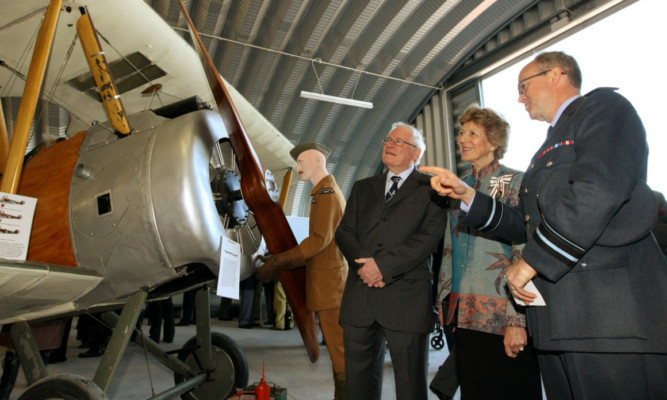An event has commemorated five air squadrons which first took flight in Angus.
Montrose Air Station Heritage Centre is celebrating the role played by the town’s air station in the First World War, during the early years of British air power.
Number 2 Squadron was among five Royal Flying Corps assets sent to war in 1914, numbering fewer than 100 planes in total.
It was joined by nascent Montrose wings 25 Squadron in 1915, 43 Squadron in 1916, and 83 and 107 Squadrons in 1917.
And the new-look Royal Air Force ended the conflict with more than 20,000 aircraft and 200 operational squadrons.
Scotland’s top RAF officer, Air Vice-Marshal Ross Paterson, attended the unveiling of an exhibition along with Lord Lieutenant of Angus Georgiana Osborne and Wing Commander Roger Elliot, commanding officer Number 2 Army Co-operation Squadron.
Mr Paterson stood beside the 25 Squadron display and thanked curator Dr Daniel Paton and the centre’s volunteers for putting the pieces together.
He expressed his “delight” in announcing the RAF will have the lead in the Edinburgh Tattoo in 2018, adding: “Over the next few years we will see many RAF anniversaries as many of our squadrons were born from the Great War.
“However advanced the technology is, it always comes down to the human element.
“That is as important today as it was at the time those brave men went up in the aircraft we’re looking at.”
A 2 Squadron Typhoon flew over Montrose in bright sunshine, followed by a flying display from Dr Neil Geddes in a replica SE5.
Alan Doe, chairman of Montrose Air Station Heritage Centre, said he hoped visitors will find the displays “informative and interesting”.
The exhibition now resides in the Lt Ross Robertson building, named after a pilot who learned to fly in Montrose but was killed in action on his fourth mission in 1917.
Station volunteers are building a replica 1914 model BE2, which they hope to finish by next summer.
Mr Doe said: “This is a unique project in the country. We are the only ones building a BE2 in Scotland.”
